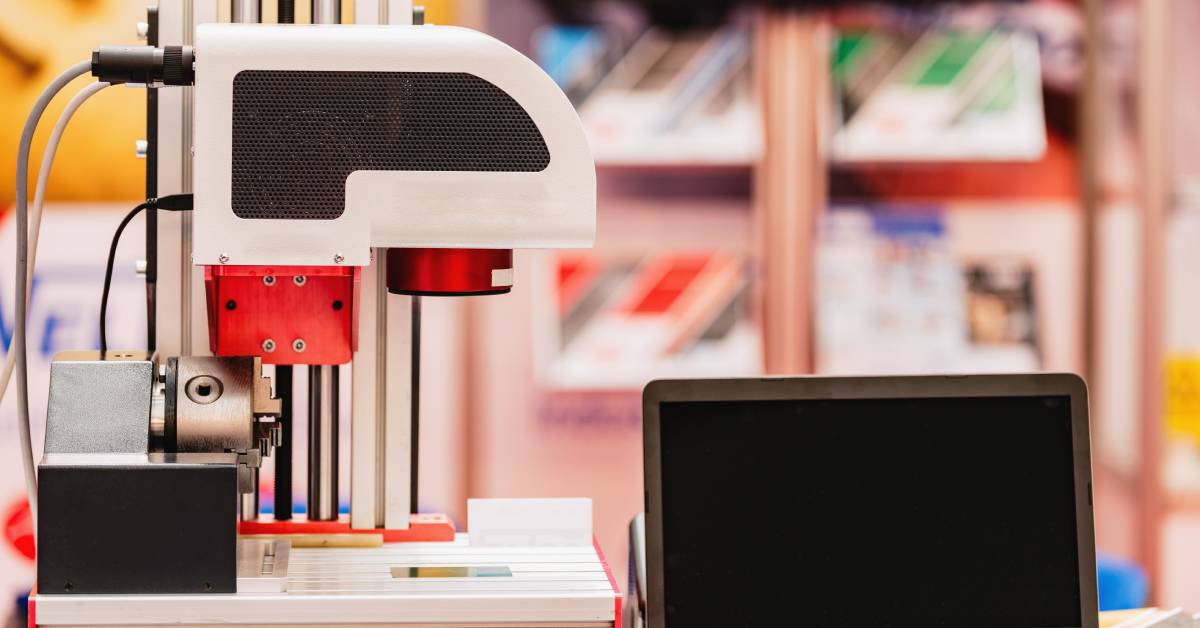CO2 vs. UV Lasers: What’s the Difference?

CO2 and UV lasers present many distinct advantages for manufacturers and many other industries. Below, we’ll delve into the differences between CO2 and UV lasers, their applications, benefits, and more.
CO2 Lasers: Understanding the Basics
CO2 lasers have long been essential in the industrial marking sector. Known for cutting and engraving various materials like wood, acrylic, and certain plastics, CO2 lasers operate at a 10.6-micrometer wavelength. This infrared wavelength is especially effective for use with organic materials.
Manufacturers value CO2 lasers for their versatility and efficiency in producing permanent marks on diverse surfaces, which makes them ideal for applications that need durability. However, CO2 lasers have limitations. They struggle with reflective and heat-sensitive materials and often need additional treatments to achieve desired results.
UV Lasers: Features and Benefits
UV lasers operate at a shorter wavelength of around 355 nanometers, offering unique advantages. These lasers, which are part of the ultraviolet spectrum, create high-contrast marks on materials that CO2 lasers struggle with. A key benefit is their ability to mark without excessive heat, reducing the risk of damage to sensitive materials.
This “cold” marking is ideal for electronics and aerospace industries where precision is critical. UV lasers produce fine, durable marks that resist environmental factors. Additionally, UV lasers efficiently mark wires and cables, ensuring readability and compliance with industry standards.
TiO2 Sequential Process
At Tri-Star Technologies, our wire marking systems use the TiO2 sequential process. This process uses titanium dioxide (TiO2) applied to the wire surface, followed by UV laser exposure to create permanent, high-contrast marks.
A key benefit is its compatibility with various wire insulation materials, ensuring consistent, high-quality markings regardless of the wire type. Additionally, it’s environmentally friendly, with no harmful chemicals or excessive energy needed. The process also enhances the durability of the markings, making them resistant to abrasion, chemicals, and extreme temperatures.
Comparison Between CO2 and UV Lasers
We’ve introduced the basics of CO2 and UV lasers, but what are the differences? CO2 lasers are versatile for marking organic and non-metallic materials, but they struggle with heat-sensitive or reflective materials.
UV lasers excel in precision marking, especially on materials that challenge CO2 lasers. Their cold marking process avoids thermal damage, making them perfect for fine details and high contrast. The TiO2 sequential process enhances UV lasers’ capabilities, offering better durability, environmental sustainability, and consistent quality.
Advancing Your Marking Solutions With Tri-Star Technologies
In the evolving landscape of industrial marking, staying ahead is crucial for maintaining a competitive edge. Knowing the differences between CO2 and UV lasers helps tech and manufacturing professionals make informed decisions to enhance production quality and efficiency.
Tri-Star Technologies leads this technological revolution with solutions like the TiO2 sequential process. To elevate your marking solutions, explore the capabilities of UV lasers and innovative marking processes with Tri-Star Technologies.


